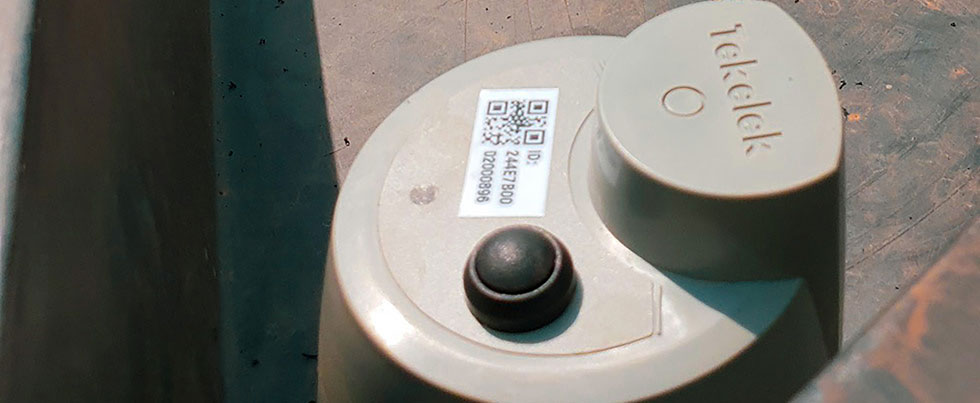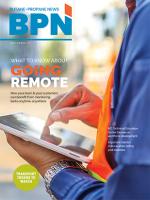
Now, more than ever, remote monitoring of inventories and asset tracking is essential to optimally running a business. However, monitoring tanks is no easy task. If situated in difficult or remote locations or if containing hazardous substances, storage tanks can be dangerous and difficult to check and monitor.
Tank monitoring technology is the solution that enables real-time level measurements. The data can be accessed anytime and anywhere. The value of a flexible, scalable, integrated remote tank monitoring (RTM) system is realized with improved efficiency across an organization while providing a reliable, safe and productive environment. An effective RTM system also sets the environment for creating new revenue streams and more value for the customer.
The growing significance of tank monitoring technology is evident from a recent market research report that highlights forecasted growth for the tank monitoring technology market at CAGR of 5.34% to reach a market value of $984.01 million by 2023, up from $720.18 million in 2017.
Increasing demand for safety and efficiency requirements across various process industries, along with government regulations to monitor and control carbon emission in the industrial and power sectors, are some of the key factors driving the market growth.
The huge demand for tank level monitoring systems among propane retailers, coupled with relatively low installation costs, is also contributing to the market growth detailed above over the forecasted period.
Having a strong monitoring strategy is a key that opens doors to operational efficiencies, better customer service and greater market share. There are many questions and considerations to work through and fully understand when deploying tank monitoring technology. To assist in this process, the following steps are recommended to readers to build a tank monitoring strategy.
1. Define Your Strategic Tank Monitoring Objectives
As a first step, it is imperative to clearly define what the objective is in adopting a tank monitoring strategy. After you have determined what it is you seek to accomplish, clarify how you expect to measure the success of your tank monitoring strategy, whether that is economic, operational efficiency, improved customer satisfaction or a combination of all of the above.
2. Map Your Tank Monitoring Process Requirements
Having defined your tank monitoring strategy objective, identify your process requirements so you know what you are looking for and are positioned to communicate your requirements to potential suppliers.
What are your network requirements for tank monitoring (cellular, LoRaWAN, etc.)? What are your data management considerations (in-house, back-end or outsource data management preferred)? What are your logistical considerations? What kind of supply terms does your company require?
3. Research Potential Technology Options, Suppliers & Strategies
Conduct market research to better understand what options are available in your market and consider how these align with your specific process requirements.
At this stage, it is important to recognize what is available and what best suits your requirements to achieve your tank monitoring strategy objectives. This is the foundational stage in building a connection with a potential technology supplier.
4. Specify Your Supply Chain Strategy, Installation & Data Management Approach
Having assessed suitable technology options along with key supplier contacts, liaise with selected potential supply partners to determine the most appropriate supply procurement system and installation data management process for your company.
5. Conduct Proof of Concept or Product Trial
In advance of committing to a particular tank monitoring technology, it is important to engage a pilot phase to test the selected device. The purpose of the proof of concept phase is to test the device in the real world and to evaluate the economic and operating data against expected performance targets.
While this process takes resources and time, the knowledge you gain through the process will no doubt save your organization time and money as you look to ramp up volumes in the future.
6. Plan Out the Design Scale Up
Equipped with defined strategic and operational objectives and knowledge of the tank monitoring technologies available and how they fit with your requirements, together with the actual operating data and insight gained through the proof of concept phase, you should be positioned to secure your goals and successfully scale up the project going forward.
Companies in the propane sector are utilizing tank monitoring technology in a multitude of ways to achieve improved bottom line performance. For example, propane distributors may utilize data collected remotely to proactively manage customers’ tanks (i.e. advise on “days to empty” and when to next order).
Organizations can obtain real-time data utilizing a range of level measurement monitoring solutions and gain insights into operational conditions. This allows them to both react rapidly to a variety of possible situations and improve business efficiency with bottom-line benefits.
Traditionally, cost of investment has prevented the widespread deployment of tank monitoring units to homes and businesses. With advances in smart tank monitoring technology, this is an exciting time as advantages of low-cost network infrastructure, long-term battery life and low maintenance costs makes large-scale monitoring an affordable and profitable investment for the propane industry.


